
Learn how to install Visual Studio Code on CentOS Stream 9 with this step-by-step tutorial. Quick, easy, and updated for 2025, this guide includes CLI
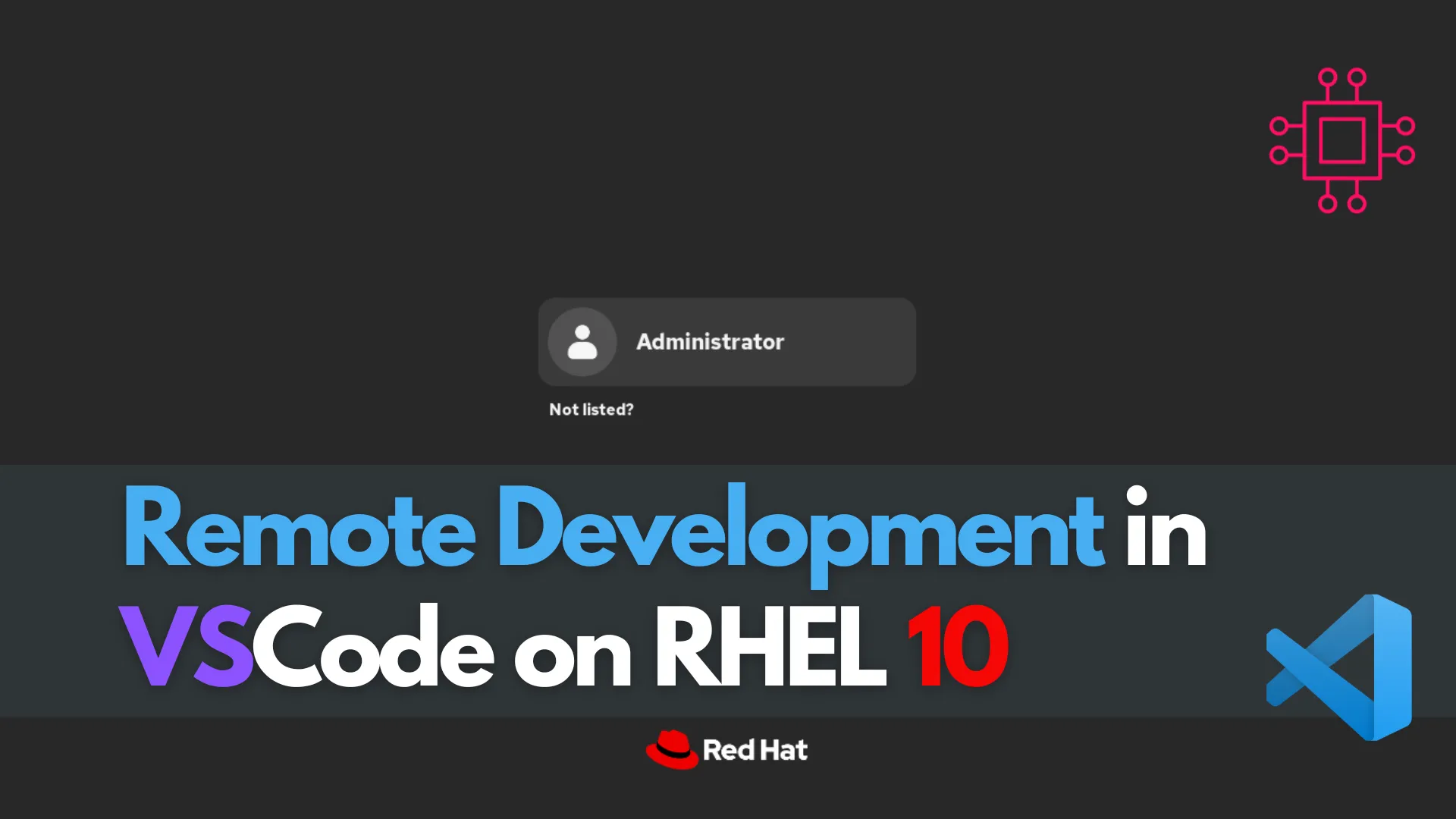
Learn how to configure remote development in VSCode on RHEL 10 with SSH, WSL, and containerized workflows. Boost productivity and streamline your development process with this comprehensive guide.
Visual Studio Code (VSCode) has become one of the most popular integrated development environments (IDEs) due to its versatility, extension support, and user-friendly interface. As software development continues to evolve, remote development capabilities have become increasingly crucial for developers working in modern environments. This guide will explore how to configure remote development workflows in VSCode on Red Hat Enterprise Linux 10 (RHEL 10), focusing on key areas like SSH, WSL (Windows Subsystem for Linux), and containerized development workflows.
Remote development in VSCode offers multiple benefits for developers:
|
|
|
Whether you’re working on a server, container, or even a Windows machine, setting up remote development on VSCode can significantly enhance your productivity and streamline your workflows.
Before diving into the specifics, ensure you have the following prerequisites in place:
|
|
|
|
|
Now, let’s break down the process of configuring remote development on VSCode for different workflows.
🤔 What is Remote SSH in VSCode? |
Remote SSH allows you to connect your local VSCode setup to a remote system over SSH. This enables you to develop directly on the remote server, using the powerful tools of VSCode while running your code in the server environment.
🖥️ Steps to Set Up Remote SSH on RHEL 10 |
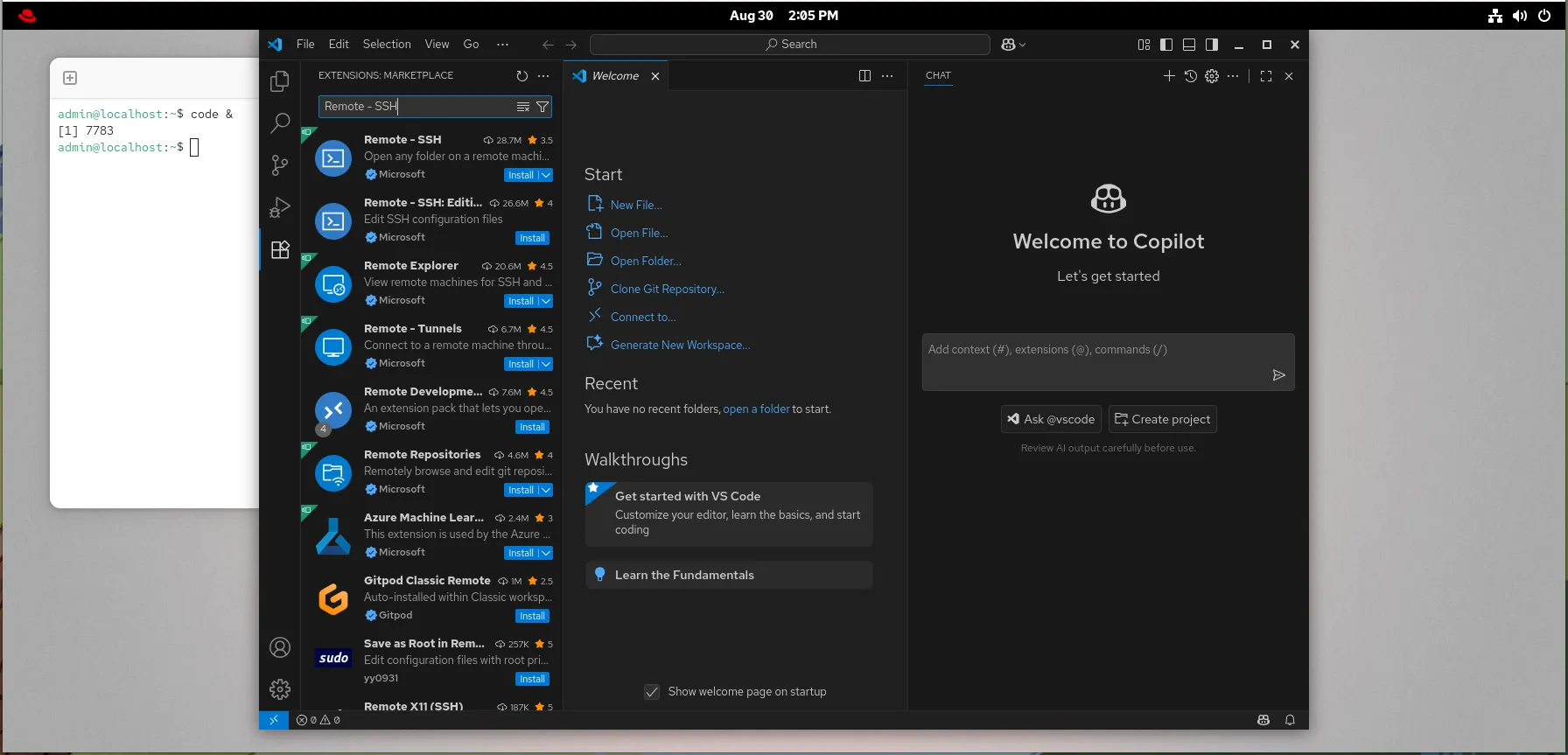
Photo by admingeek from Infotechys
🔹Install the Remote-SSH Extension in VSCode |
First, you’ll need to install the Remote – SSH extension from the VSCode marketplace.
|
|
|
🔹 Configure SSH Access on RHEL 10 |
You need to ensure that your RHEL 10 system is set up for SSH access. You can check if SSH is installed with the following command:
sudo dnf install openssh-server
Next, start and enable the SSH service:
sudo systemctl enable --now sshd
Now, you should be able to SSH into the server using the following command from another machine (replace username with your RHEL user and ip-address with the server’s IP address):
ssh username@ip-address
🔹 Configure SSH in VSCode |
Once the extension is installed, open the Command Palette (Ctrl+Shift+P) and search for Remote-SSH: Connect to Host.... Enter the SSH connection details:
ssh username@hostname_or_ip
After entering your credentials, VSCode will connect to the remote server. Your remote workspace will now be available inside the VSCode editor.
🤔 What is WSL? |
WSL (Windows Subsystem for Linux) enables you to run a full Linux distribution within Windows. This method is ideal if you are developing on a Windows system but want to use Linux tools and environment for your coding tasks.
🖥️ Setting Up WSL for Remote Development on VSCode |
While RHEL 10 is Linux-based, if you’re using a Windows system as your host, setting up WSL will help to bridge the gap for remote development.
🔹Install WSL on Windows |
If you haven’t installed WSL on your Windows machine, you can do so via PowerShell:
wsl --install
After installation, you can choose your preferred Linux distribution (e.g., Ubuntu, RHEL, Fedora) from the Microsoft Store.
🔹Install the Remote-WSL Extension |
In VSCode, go to the Extensions view and install the “Remote – WSL” extension.
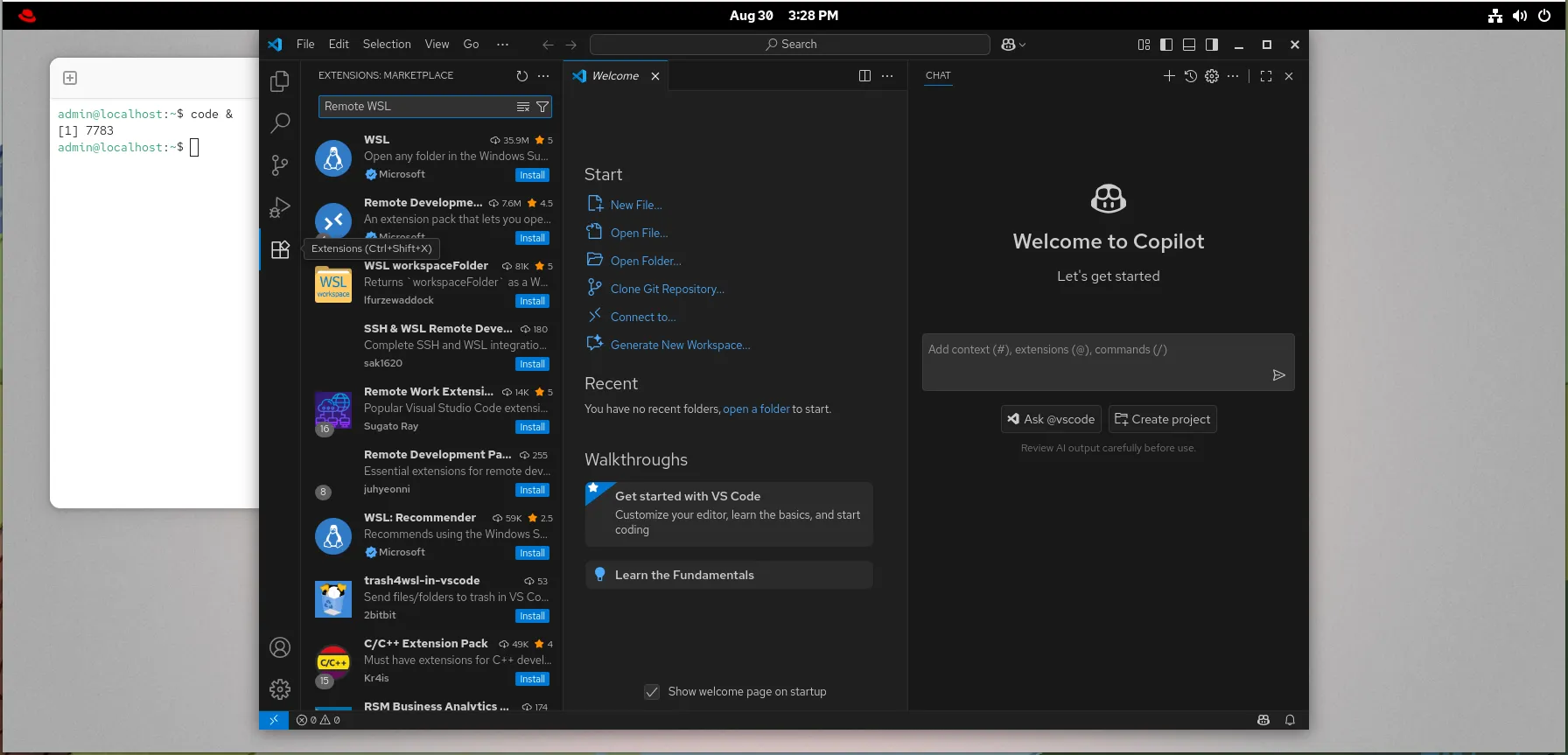
Photo by admingeek from Infotechys
🔹Access Remote Development in VSCode via WSL |
After configuring WSL and VSCode, you can access your Linux environment directly within VSCode. Use the Command Palette (Ctrl+Shift+P) and select Remote-WSL: New Window.
🔹Configure WSL for Remote Development |
Your WSL setup will appear as a workspace, and you can open files and directories from your Linux environment in VSCode. You can also use terminal commands to run and debug applications.
🤔 What are Containers in VSCode? |
Containerized development allows you to develop within a Docker or Podman container, which offers a lightweight, isolated environment for your applications. Using containers within VSCode ensures a consistent and replicable development setup.
🖥️ Steps to Set Up Remote Development with Containers |
🔹Install Docker or Podman |
First, you need to install Docker or Podman (which is a Docker-compatible tool) on your RHEL 10 system.
For Docker:
sudo dnf install docker -y && sudo systemctl enable --now docker
For Podman:
sudo dnf install podman -y
🔹Install the Remote – Containers Extension |
In VSCode, search for the “Remote – Containers” extension in the Extensions marketplace and install it.
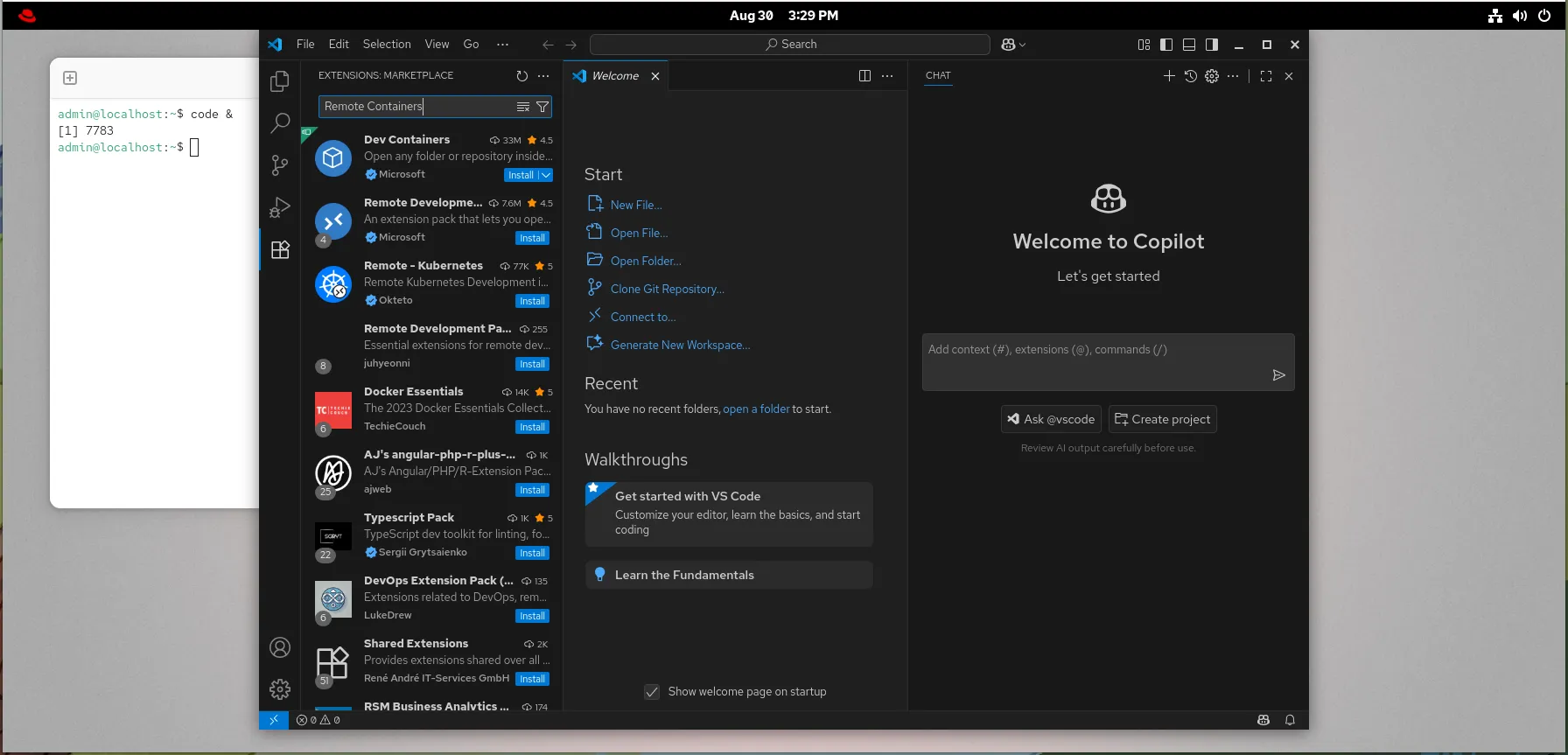
Photo by admingeek from Infotechys
🔹Create a Dockerfile or Devcontainer Configuration |
In your project directory, create a .devcontainer folder and place a Dockerfile or devcontainer.json file inside it to configure the container environment. Example devcontainer.json file:
{
"name": "My Development Container",
"image": "mcr.microsoft.com/vscode/devcontainers/python:3.8",
"postCreateCommand": "pip install -r requirements.txt"
}
🔹Open Project in a Container |
Once everything is configured, open the Command Palette (Ctrl+Shift+P) and select Remote-Containers: Open Folder in Container. VSCode will build and start the container, allowing you to work directly inside the isolated environment.
🔄 Use Version Control (Git) |
Always ensure your code is under version control using Git. This will help you maintain a history of changes, collaborate with others, and rollback changes if needed.
🔄 Use the Integrated Terminal |
VSCode’s integrated terminal is powerful for running commands on your remote server or container. Use it to execute build scripts, test commands, or manage processes without leaving the editor.
🔄 Remote Debugging |
VSCode’s remote debugging capabilities let you debug applications running on your remote server, container, or WSL setup. Install relevant extensions for Python, C/C++, or Node.js to enable seamless debugging across remote environments.
Configuring remote development in VSCode on RHEL 10 is an excellent way to enhance productivity and ensure a seamless development workflow. Whether you’re working through SSH, using WSL, or deploying containerized applications, VSCode provides robust and flexible remote development support. By following the steps outlined in this guide, you can leverage the power of remote development and optimize your coding experience on RHEL 10.
Did you find this article helpful? Your feedback is invaluable to us! Feel free to share this post with those who may benefit, and let us know your thoughts in the comments section below.

Learn how to install Visual Studio Code on CentOS Stream 9 with this step-by-step tutorial. Quick, easy, and updated for 2025, this guide includes CLI
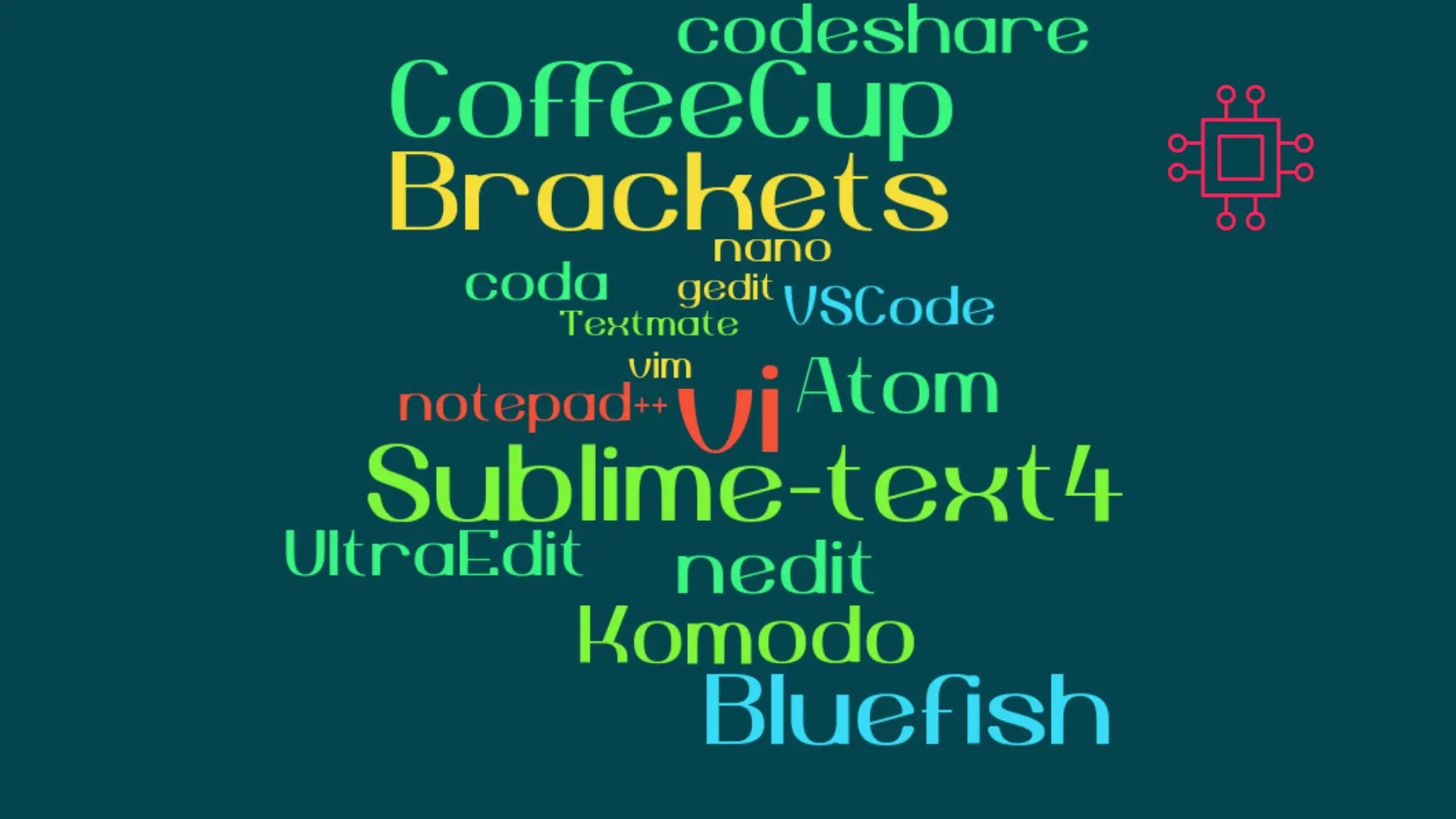
When it comes to popular text editors for Linux, text editors are like wallets. Everybody’s got one and more importantly, everyone’s choice of a text

Are you wondering, which text editor should you choose?! Compare Visual Studio Code, Sublime Text, Atom, Notepad++, etc… to find the perfect tool for coding,
